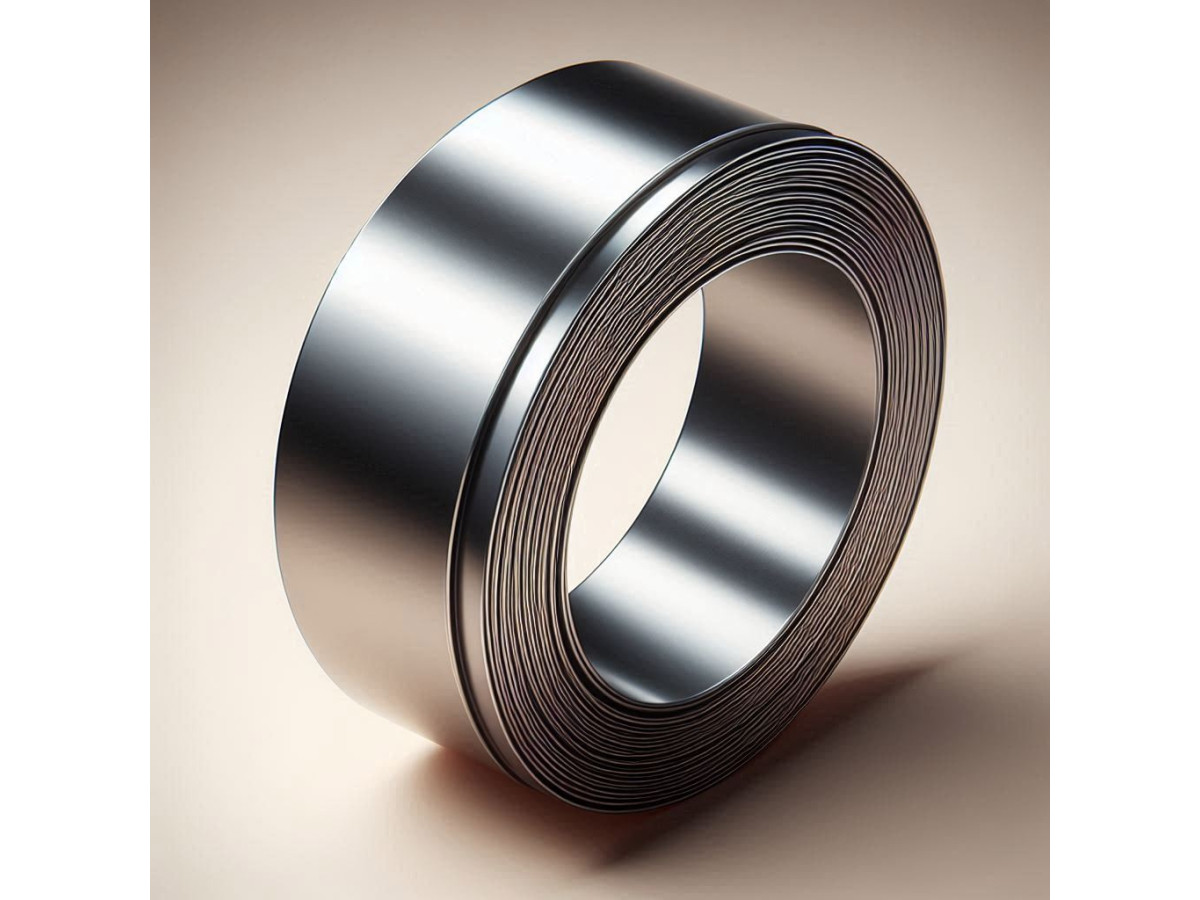Stainless steel strip is a valuable material widely used in various industries. Its durability and operational characteristics largely depend on proper storage and transportation. In this guide, we will detail the key aspects of handling stainless steel strip to preserve its properties and prevent potential damage.
How to Store Stainless Steel Strip?
The main requirements for storing stainless steel strip start with selecting an appropriate location. The storage area should be dry, well-ventilated, and maintained at a constant temperature. It is important to avoid sharp temperature fluctuations that can lead to condensation. The optimal storage temperature is between +15 and +25 degrees Celsius, and the relative humidity should not exceed 65%. Exceeding these values can trigger corrosion processes even on stainless steel.
To keep stainless steel in perfect condition, it should be stored properly. Special shelves or pallets are used for this purpose. Never place rolls directly on the floor, even if it is concrete or covered with a special material. Why? Because moisture can penetrate the material from below, causing corrosion, and the roll itself may be damaged from impacts or friction against the floor.
Storage Rules:
The main rules for storing stainless steel strip are:
- Rolls of stainless steel should always be placed horizontally to avoid deformation and damage to the material.
- Spacers must be placed between rolls to protect the surface of the strip from scratches and other mechanical damages.
- Strips are sorted by steel grades and dimensions for ease of locating and preventing accidental mixing.
- Direct sunlight can negatively affect the properties of stainless steel. Therefore, rolls should be stored in a sun-protected area.
- The condition of the packaging is regularly checked to promptly detect and address any possible damages.
- Temperature and humidity in the storage area are maintained at optimal levels to prevent corrosion and other negative processes.
- Contact with ferrous metals can lead to electrochemical corrosion of stainless steel. Therefore, rolls are stored separately from other types of metals.
- The storage duration of each batch of strip is tracked to ensure timely usage and avoid spoilage.
Transporting the Material
When it comes to transporting stainless steel strip, there are also specific features and requirements. First and foremost, it is essential to ensure reliable packaging of the material. A standard packaging scheme includes several layers of protection: an inner layer of inhibitor paper, a middle layer of polyethylene, and an outer layer of durable packaging material. Special attention should be paid to end protection of the rolls.
During loading and unloading operations, only specialized equipment with soft grips should be used. The use of cables or chains is not permitted, as this can lead to deformation of the material and damage to the surface of the strip. All manipulations should be carried out smoothly, without jerks and impacts.
Main Requirements for Transporting Stainless Steel Strip:
- Stainless steel strip should be transported on vehicles with a flat and clean platform to prevent contamination and damage to the material.
- The cargo must be securely fastened to the platform to eliminate any movement during transportation and possible damages.
- The strip should be protected from atmospheric precipitation, as water and moisture can negatively affect its properties.
- All measures should be taken to prevent mechanical damage to the strip during transport, such as scratches, dents, and deformation.
- A specific temperature regime must be maintained to exclude the negative impact of low or high temperatures on the material’s properties.
- Complete and accurate accompanying documentation is a mandatory requirement for transporting stainless steel strip.
- Loading and unloading of the strip is carried out by qualified personnel who are knowledgeable about the specifics of working with this material.
- For long-distance transportation, the cargo must be insured to compensate for potential losses in case of damage or loss.
An important aspect is also the proper preparation of the material for use after long-term storage. Before application, the stainless steel strip should be acclimatized in the production area for at least 24 hours. This will help avoid temperature deformations and provide optimal conditions for further processing.
Adhering to all the aforementioned requirements for storing and transporting stainless steel strip allows for the preservation of its operational characteristics and ensures high quality of the final product. Neglecting even one of these aspects can lead to significant financial losses and a decrease in the quality of manufactured products.

